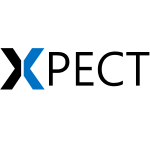Customers need to be at the centre of decisions like product selection, service delivery options, and the buying experience. The modern version of this is called customer-centricity and sees organisations analysing a range of business data to guide activities like personalisation of marketing tactics and improvements to customer service.
Large companies are hopping on board this trend, but it can also work for small and medium sized businesses. By taking a strategic approach to technology investment and digital transformation, an SME can access useful data from across the business to apply to practical, customer-centric tactics for customer experience, marketing and customer retention.
Is data-driven customer-centricity right for your business?
Data-driven customer-centricity may be particularly well-suited for SMEs that meet some of the following criteria:
- Broad customer base: Offers more data points for analysis of customers’ needs and preferences, sales trends etc.
- Repeat customers: Provides more opportunities to gather customer feedback to inform customer experience improvements.
- eCommerce focus: Results in a wealth of digital data that can be used to optimise website and marketing campaigns.
- High-margin products or services: Enable investment in customer-centric initiatives such as data analytics tools and customer feedback surveys.
- Growth-oriented: Requires a data-driven approach to identify opportunities and inform product development, marketing and strategy decisions.
What does customer-centricity look like?
Imagine what you could do if you could control and view customer relationship management (CRM), accounting, inventory, website statistics, ecommerce and marketing communications in one place?
For example, you could use filters to refine your data to inform marketing efforts. Let’s say you have excess inventory of certain items. You could find all customers matching the following criteria:
- Delivery address in postcodes surrounding a specific shop or within your delivery area.
- Logged into your website within the past 90 days.
- Purchased more than $x within the last year.
- Has an account that is not overdue.
- Subscribed to the mailing list.
- Shows a tendency to purchase items from the overstocked category.
Using the same platform, you could set up and send a special offer to that subset of your customer base that not only helps you to move your inventory, but also shows them that you know them and understand their preferences.
You can track who opens the message and who makes a purchase, allowing you to capture more customer information and understand the success rate of the marketing tactic.
That will pay more dividends than sending out a random flyer to every customer in your database and relying on gut feel to determine if it was effective or not.
Here’s another example. Let’s say you query your data to find the types of products that were bought by people on accounts where there are rarely overdue payments. You look for similarities in the accounts that are consistently paid on time, and you identify several customer types or categories. You look for trends in that data such as times of year when certain products are more popular with certain customer categories.
That’s where the integrated inventory management comes into play. If you can anticipate that a certain SKU would be more successful in a given year by focusing sales and marketing efforts on particular customer categories, then you need to have the inventory to support that tactic.
If inventory management is in the same platform, then you can easily align stock orders, supply chain management, stock movements etc. with the sales and marketing tactic.
Business management platforms are for SMEs, too
SMEs interested in using data in this way must find technology solutions designed to suit their business size, needs, and budget.
These days that doesn’t limit you to solutions that lack features, functionality and scalability.
SMEs can step beyond the limitations of software designed to support one element of the business, like an accounting tool, by selecting a scaled-down, cloud-based ‘mini-ERP’ solution specifically designed for them.
This kind of platform can combine the management of various business operations, such as payroll, customer relationship management, inventory management, sales, pricing, eCommerce, and customer retention (e.g. loyalty programs), all in one place.
If you’re looking to get properly set up for process improvement, modernisation and growth, or if you know you need to add functionality and you’re tired of trying to integrate standalone solutions, a business management platform can help, as explained in this earlier article: Data, data, everywhere? Get it together
Meet Xpect
Designed, developed, hosted and supported in Australia for Australian SMEs, Xpect is an end-to-end cloud-based platform that unites management, communication and reporting across finance, payroll, marketing, sales, website, human resources and operations.
Watch this two-minute Xpect Overview Video and you’ll immediately see advantages for your business.











